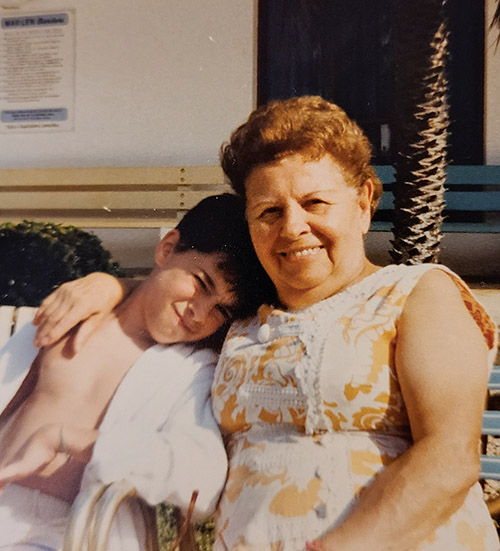
I was going to continue my story of swimming in the Atlantic Ocean, but my friend Rabbi Elchanan Poupko wrote a piece in which he said that we should “let Jewish kids remember this as the year the adults in their lives went crazy with kindness.” He was speaking of the need to counter the socially limiting effects of COVID by doing more this Chanukah season, even embracing the idea of “eight days of presents.”
It made me start to think about our Chanukah customs, particularly the foods.
Two of the most prominent Chanukah foods are jelly doughnuts (sufganiyot) and potato latkes.
As a history teacher I know that these two foods were not eaten in the times of the Chanukah story and in fact that the Chanukah story took longer than eight nights.
So, how did we wind up eating these foods and why do our non-Jewish coworkers keep thinking that there is a custom to give presents for eight straight nights?
Potatoes are native to South America. There are in fact over 200 varieties of these tubers in the Inca Empire of what is today Peru and Chile, but Europeans did not even know of their existence until Pizzaro’s arrival in 1523.
So how is it that everyone’s grandmother used to make these holiday staples?
Rav Nissim Gaon (990–1062) claimed the origin of the story goes back to the tale of Judith who made deep fried salty cheesecakes that she fed to her enemy, the Assyrian general Holofernes. Then he drank wine, passed out and she cut off his head. Now Judith lived hundreds of years before the Maccabees, but her dish took hold in the Jewish community during the Hasmonaean period, hence the connection to Chanukah.
So, we have Italian Jews making deep fried cheese latkes in the 1300s and we have the potato waiting across the Atlantic to be introduced.
Sir Walter Raleigh brought potatoes to Ireland in the 1500s as the Spanish were introducing the spuds to Southern Europe, but people were afraid to eat what they thought were poisonous foods.
Then in 1770, a mini-ice age hit and killed off many crops. To avoid starvation, people started eating potatoes throughout Europe.
Catherine the Great, ruler of Russia, ordered farmers to plant potatoes instead of grain because potatoes grow faster than grains and are easier to prepare. Making bread requires many steps including harvesting, winnowing, kneading and baking. Potatoes? Dig them out of the ground and boil them. You now have enough calories, minerals and vitamins to last two adults an entire day.
It is no surprise that with the addition of this food to the diet of Europeans that Jewish population numbers in Eastern Europe increased. In the space of 75 years, the Jewish population of Russia and Poland went from 1.6 million to over five million. When these Jews, like my great grandfather, came to America in the late 19th century, they brought their latke recipes with them.
So, what about jelly doughnuts?
As a product of a Jewish day school education, I first encountered jelly doughnuts as a Chanukah treat in the first grade. It was 1975 and I was attending the brand new Salanter Akiba Riverdale Academy, aka, SAR Academy. Which begs the question, if we associate jelly doughnuts with Chanukah, why didn’t our bubbes have recipes for these treats?
The Hebrew word for jelly doughnuts is sufganiyot. The origin of the word is Greek, “sfog,” which in the ancient Greek means “sponge.” Hey, if you are going to fill a pastry with sweets you want it to be sponge-like. The Jewish communities of Italy may have been the first to fill these deep-fried pastries with sweets, like raisins, but they really took hold in Germany and Poland.
In the 19th century, everyone and their grandmother could make latkes, very few could really bake. In the British controlled pre-State of Israel, the Histadrut (national labor movement) pushed for this dessert to become the gastronomic symbol of Chanukah.
And what of the “eight days of gifts’’? Growing up in Westchester, I played on Shabbos with friends who attended the Conservative shul in town. They would always ask me why I only got gifts on one night and I was never able to explain this to them. In fact no one was able to explain to the 8-year-old me where the whole idea of gifts came from in the first place.
There is one narrative that says gifts to children started in Europe with the mitzvah of giving charity to the poor so that they could buy Chanukah candles. From there, it became giving out chocolate coins to children to teach them about the mitzvah.
As early as the 1920s, Yiddish newspapers were advertising Chanukah gifts for Jewish children as a way for American Jews to not feel left out when their neighbors exchanged gifts. The idea of eight days of gifts seems to have taken off in the affluence of post-World War II America for the same reason. I just wish that Adam Sandler had written the “Hanukkah Song” sooner.
David Roher is a USAT certified marathon and triathlon coach. He is a multi-Ironman finisher and a veteran special education teacher. He can be reached at: [email protected]










